The Rules of the Game
One player plays with the white pieces and the other player plays with the black pieces. White gets to move
first and then the players alternate moves. The game ends either in a draw or with one
player checkmating the other and winning the game. The players can also agree
to a draw in the middle of a game or one player can resign (give up) if he
knows he will lose.
The game is generally divided into three phases: the opening, the middlegame, and the
endgame. In the opening, you want to move your pieces out to good
squares in preparation for the middlegame. You also want to make sure your king is safe, usually by
castling.
In the middlegame, players fight for the advantage and sometimes try to checkmate each other. In the
endgame, promoting pawns is usually
the goal players aim for.
Check
Check is when you move a piece so that it threatens to take your opponent's
king the next turn. Your opponent must stop the check by either moving their king, blocking the
check
with another piece, or capturing the piece that is checking.
Checkmate
Checkmate occurs when one player is threatening to take their opponent's king
and their opponent cannot prevent it by making a legal move. If you checkmate your opponent, you
win.
Draws
There are four ways a draw can happen.
- The players can agree to a draw.
- Three move repetition. That is when the exact same position occurs on the board three times.
- Stalemate. Stalemate occurs when one player has no legal move on their turn
and they are not in check.
- The 50 move rule.
That is when 50 moves are made without a pawn moving or a piece being captured.
Check is when you move a piece so that it threatens to take your opponent's king the next turn. Your opponent must stop the check by either moving their king, blocking the check with another piece, or capturing the piece that is checking.
Checkmate occurs when one player is threatening to take their opponent's king and their opponent cannot prevent it by making a legal move. If you checkmate your opponent, you win.
There are four ways a draw can happen.
The Board and the Pieces
A chessboard has 64 squares that alternate black (dark) and white (light). The rows are called 'ranks' and
are
numbered from 1 to 8. The white pieces start on the first and second ranks while the black pieces start on
the seventh
and eighth ranks. The columns are called "files" and are ordered from 'a' to 'h'. The a file is on white's
left
and black's right.
Each player has eight pawns, two rooks, two knights,
two bishops, one queen, and one king. Knights and bishops are called minor pieces while rooks and the queen
are called major pieces.
The pieces are arranged like this:
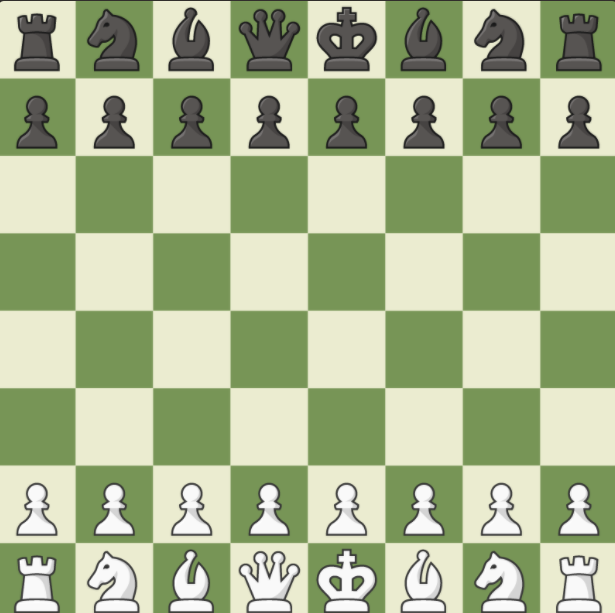
In-Depth Summary


|
Pawns can move one square forward unless they are on their starting square, in this case they can move either one or two squares forward. But they capture other pieces by moving diagonally forward to the left or right. Promotion :If your pawn reaches the back rank of your opponent, it promotes immediately into any other piece of your choice. en passant : This move can only be performed by a white pawn on the fifth rank or a black pawn on the fourth rank. |
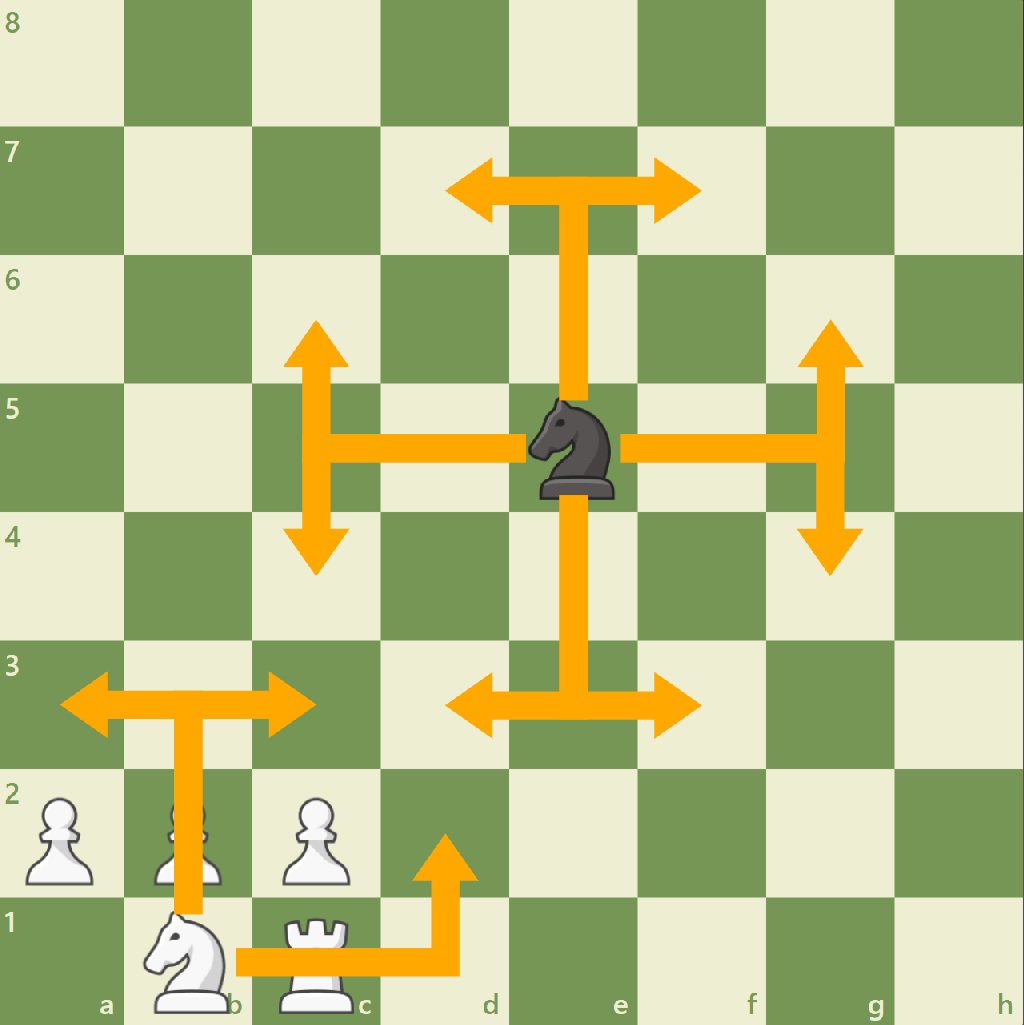
|
Knights are a minor piece . They move in an 'L' shape: two squares in one direction and one square left or right. Unlike pawns, they can move in any direction. They also have the unique ability of being able to jump over other pieces. This allows knights to reach squares that might be hard for other pieces to get to. They are therefore most effective in the middle of the board. |

|
Bishops are a minor piece like knights. They move diagonally in any direction, for any number of squares. Bishops can only move on squares of one color but they have a long range. In an open position, bishops can attack squares on both sides of the board. A pair of bishops can be a powerful force. |
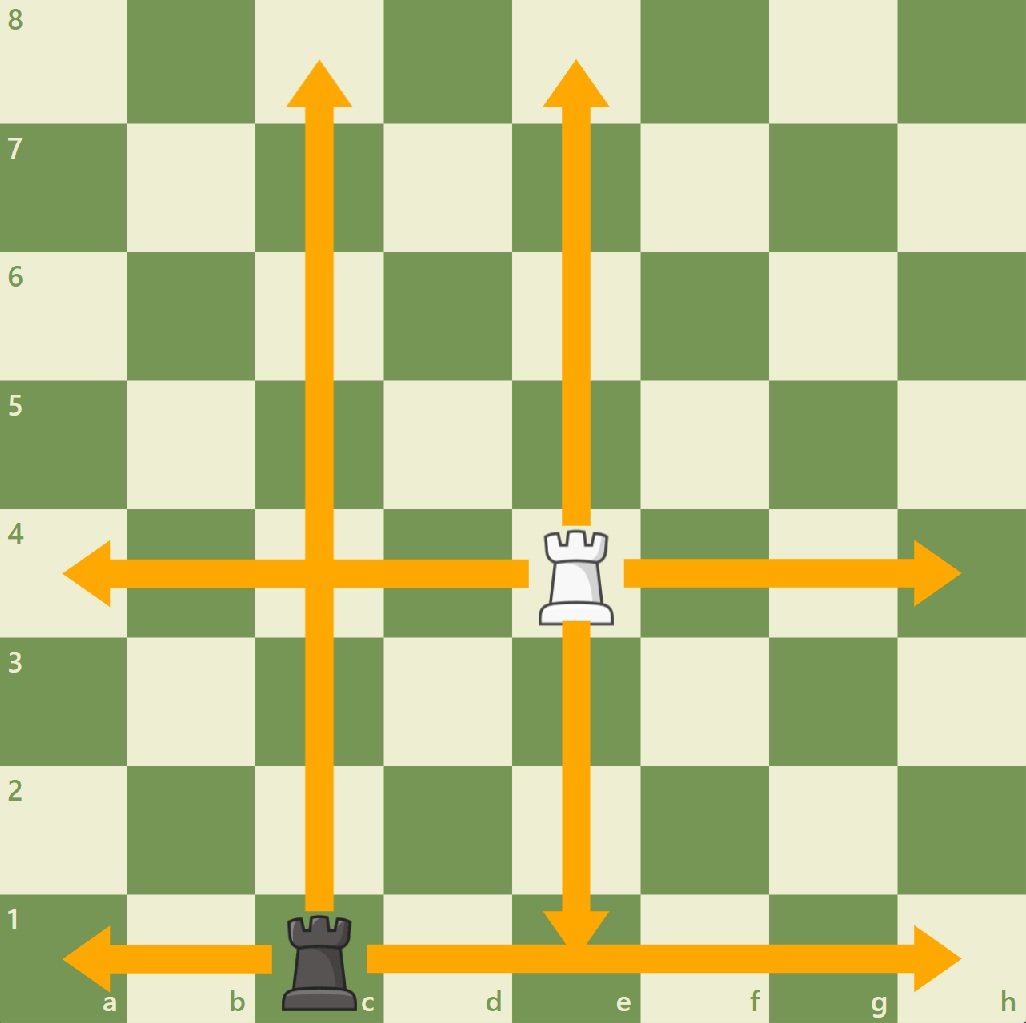
|
Rooks are a major piece. They move in a straight line for any number of squares. As the game goes on, rooks become more powerful as pieces are traded and the board opens up. They play their most active role in the endgame.Rooks work best on open files, where their full range is utilized. Doubling up rooks (putting one in front of the other on the same file) is a powerful attacking tool. |
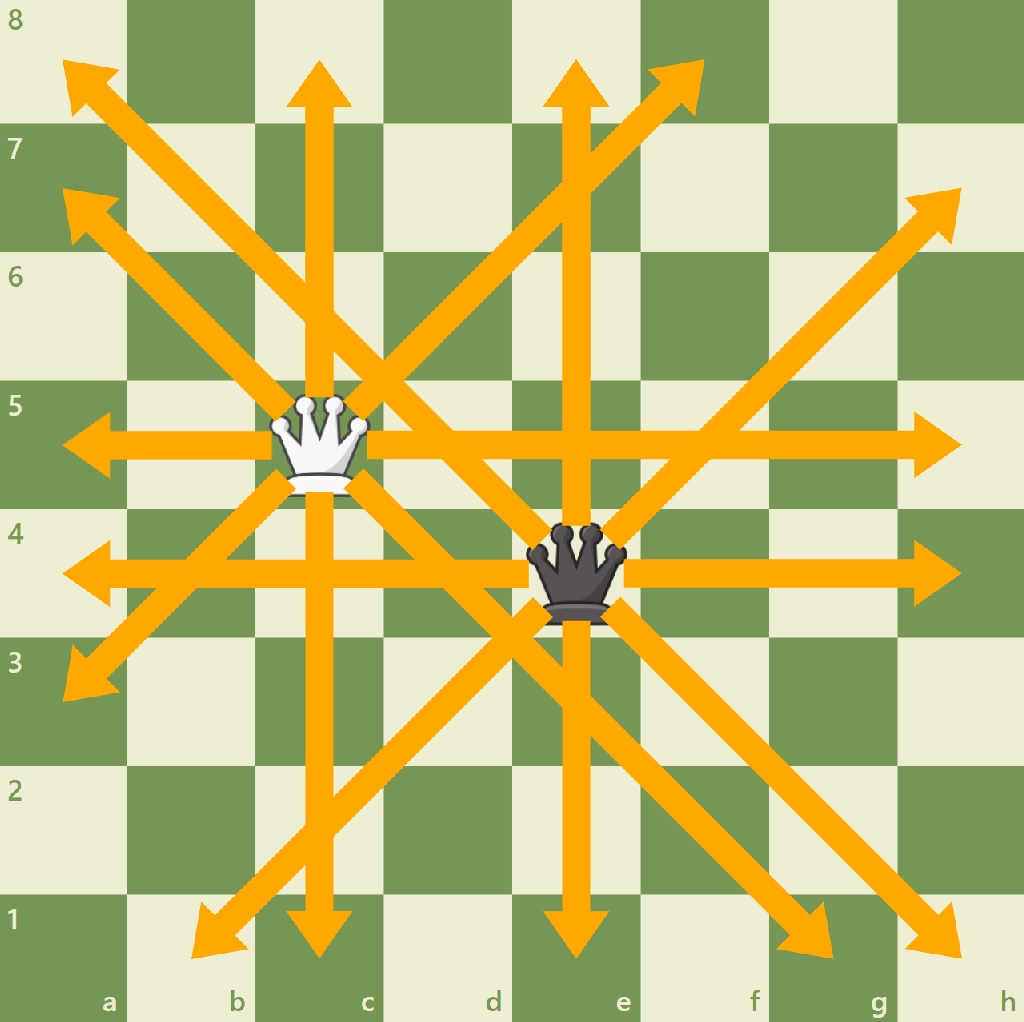
|
The queen is the most powerful piece on the board. Able to move both diagonally and in straight lines.. The queen can attack multiple pieces at the same time and move easily across the board. |
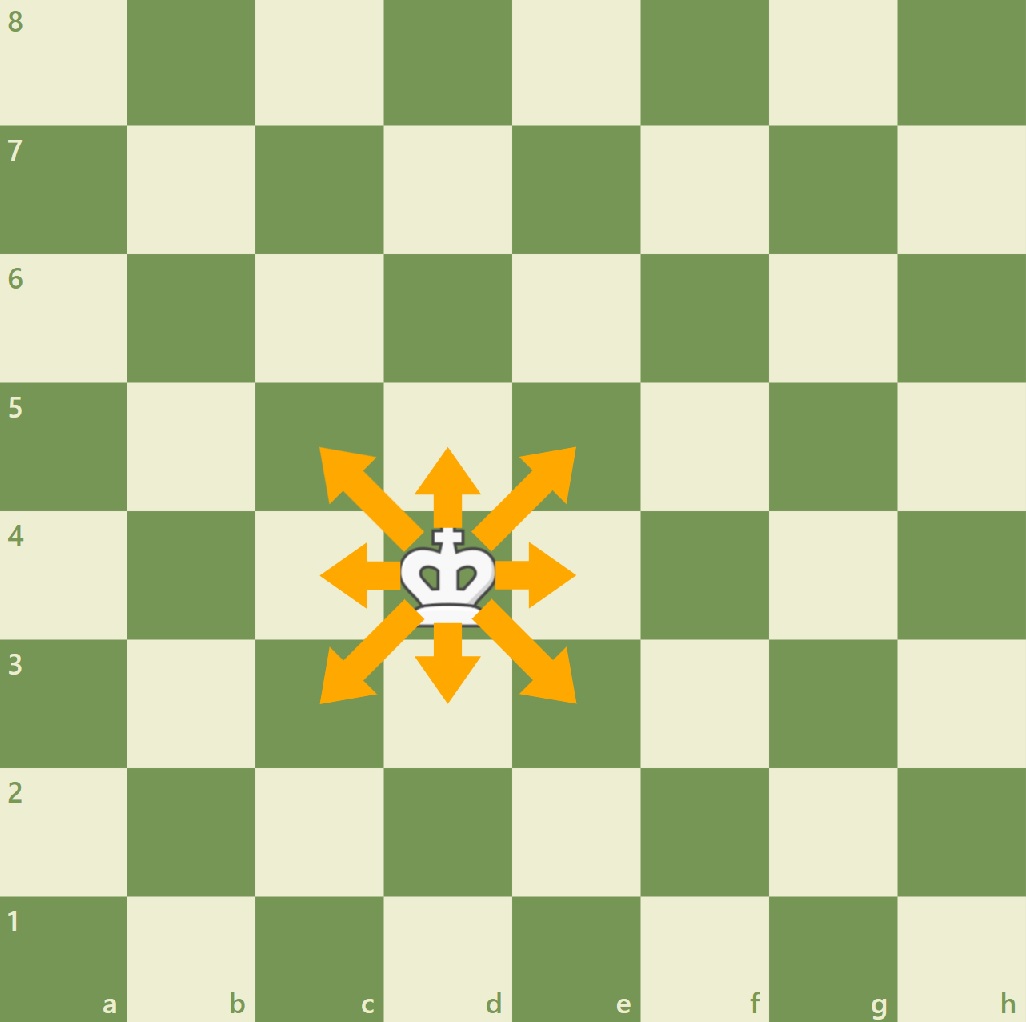
|
The king is the most important piece of the game. If you let it get checkmated, than you lose. That is why many games revolve around attacking your opponent's king while defending you own. The king can move one square in any direction. |
Summary
| Piece | Point Value | Movement | Special Ability | Advantages/Disadvantages |
|---|---|---|---|---|
| Pawn | 1 | One square forward, or two from the starting position | Captures diagonally, en passant, promotion | + Can defend other pieces well - Limited mobility for attack |
| Knight | 3 | Like an "L", two squares forward and one to the right or left | Can jump over other pieces, cannot be blocked | + Can move easily in closed positions - Relatively short range |
| Bishop | 3 | Diagonally for any number of squares | None | + Can move long distances |
| Rook | 5 | In a straight line for any number of squares | Takes part in castling | + Moves long distances on both colors - Cannot move diagonally |
| Queen | 9 | In a straight line or diagonally, combines movement of bishop and rook | None | + Moves both diagonally and on straight lines - Vulnerable to attack from weaker pieces |
| King | Infinity | One square in any direction | Takes part in castling, checkmate is delivered to it | + A useful attacking piece in the endgame - Needs to be defended to avoid checkmate |